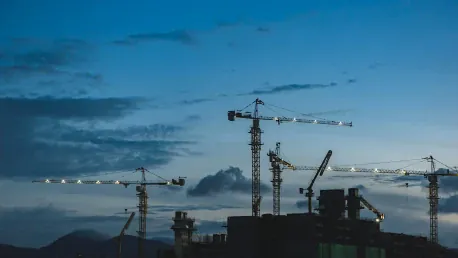The hotel industry is experiencing unprecedented growth in its construction pipeline as of Q2 2024, highlighted by a significant rise in both the number of projects and rooms worldwide. This surge is prominently driven by the robust expansion in the U.S. and China, which collectively account for a substantial portion of this development.
Global Pipeline Overview
Globally, there are 15,453 hotel projects in the construction pipeline, encompassing 2,395,726 rooms, marking a 6% year-over-year increase in projects and a 4% rise in rooms. This trend is significantly powered by developments in the upper midscale and upscale hotel segments. Upper midscale projects alone account for 29% of the total pipeline, with 4,540 projects and 585,688 rooms. Similarly, upscale segments are hitting record highs with 3,688 projects encompassing 634,050 rooms.
Geographical Concentration
The geographical concentration of this growth is notable, with the U.S. and China alone constituting 64% of the global hotel construction projects. The U.S. leads with 6,095 projects, translating to 713,151 rooms, while China follows closely with 3,815 projects and 699,786 rooms. This highlights the strategic importance of these markets in the global hospitality industry, alongside other upcoming hotspots like India, Canada, and Saudi Arabia.
Key Urban Centers
Certain cities are emerging as frontrunners in hotel development. Dallas, Atlanta, and Chengdu are at the forefront, with Dallas leading with 189 projects and 22,392 rooms. Atlanta follows with 159 projects and 18,522 rooms, and Chengdu with 147 projects and 26,951 rooms. These cities underline the particular urban centers propelling national growth in the U.S. and China.
Future Projections
Looking ahead, industry forecasts anticipate that 2,534 new hotels with 372,686 rooms will open in 2024, with additional growth expected in 2025 and 2026. This projection suggests a continuing momentum in global hotel openings, with a trend toward increasing the number of projects each year.
Segment Growth
The segmentation within these hotel projects also reflects industry responses to evolving traveler preferences. The focus on upper midscale, upscale, and midscale segments indicates a strategic move towards balancing affordability and quality. Additionally, there has been a noted increase in luxury hotel projects, which have grown by 13% year-over-year. This suggests a rising demand for high-end accommodations.
Conclusion
The current landscape of global hotel construction as of Q2 2024 showcases a dynamic and evolving hospitality market, with significant contributions from the U.S. and China. The growth in various segments, particularly upper midscale and upscale hotels, along with the concentrated expansion in key urban centers, paints a picture of an industry poised for continued robust growth. This analysis not only highlights the current state of the industry but also projects ongoing trends, providing a comprehensive overview of its future trajectory.









